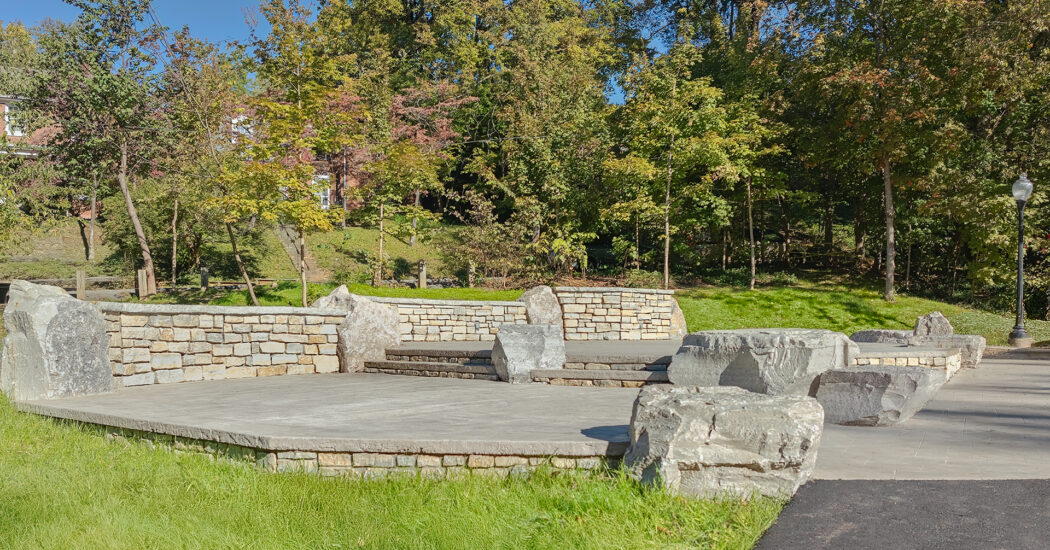Elevate Your Expectations for Downtown Development, Part I
-
Category
Studio-Community, Innovation -
Posted By
Wayne Schmidt -
Posted On
Feb 27, 2015
A couple of months ago I was honored to write a column for the Indianapolis Business Journal about 10 things Indianapolis could do to make our already thriving downtown an even better place to live.
Number one on my list is investing in more parks as an amenity to keep young urban dwellers downtown after they have kids. Although we have some great parks—White River State Park, University Park, the American Legion Plaza, and the small but lovely Davlan Park across from our office, we need more of them.
I once visited Las Vegas on business and planned to get my daily dose of running. When I asked at the hotel desk where I’d find a nearby park, the man behind the desk looked puzzled and asked, “What would you do in park?” That told me Las Vegas is not a walkable city!
Think about the great cities where people of all ages live downtown: New York, Chicago, San Francisco, Denver, Philadelphia, and Washington, D.C. You’ll find these walkable cities all offer an assortment of parks that add color and flavor to the urban experience.
Some parks are for sitting and looking at nature, to give you a break on your walk from apartment to shopping to restaurants. Some parks are for running, exercise, or even ice skating. Some are for walking your dog. Some (Grant Park, the Washington mall, and our American Legion Plaza come to mind) can host events. Other parks are for playing—and even then, you have a mixture of pocket parks interspersed among bigger ones with playground equipment and basketball courts.
Central Park in New York is large enough to incorporate all those uses and a zoo! But even with the country’s largest urban park and some of the world’s most expensive real estate, New York still finds room for smaller squares and plazas accessible to residents throughout the city.
The architect in me can’t resist offering suggestions to successfully incorporate more parks into Indianapolis’ downtown:
- Walking distance: Urban dwellers don’t want to drive if they can avoid it. At least one park (and preferably several parks) should be within walking distance of every urban dweller’s residence. We should plan for that whenever additional urban housing is proposed.
- Incorporate different parks for different uses: We have parks that fulfill some of the needs above, but we need more of them, and downtown Indianapolis needs at least one park with a big playground.
- Park designs should facilitate interaction: Include chess boards and other elements that encourage people to interact with one another. The potential for interaction is part of what makes downtown living so attractive. It brings people of all ages and backgrounds together, and the world needs more of that!
- Facilitate interaction, part 2: Parks with playgrounds don’t just encourage children to interact, their parents begin to visit as well. “Who’s your pediatrician? Where are you sending your daughter to preschool?” Those conversations among adults as they push their toddlers in the swings help parents find their “tribe” of other young parents. Before you know it, they resist moving to the suburbs because they’d have to leave their tribe behind.
- Co-locate parks with coffee shops and ice cream stores: Consuming your refreshments of choice in the park encourages you to linger.
- Incorporate public art into urban parks: The Indianapolis Museum of Art’s 100 Acre Park is a wonderful place combining art and nature. But it also encourages people to be playful walking on the skeleton’s bones or bouncing your own basketball to mirror colorful metal arches. Public art doesn’t have to be as large and sprawling as the 100 Acre Park. A brass turtle suitable for climbing or a huge wooden head are enough to add a new sensory dimension to even a small pocket park.
What’s your favorite city for urban living? Let me know what you like about it. I’ll bet involves parks.







